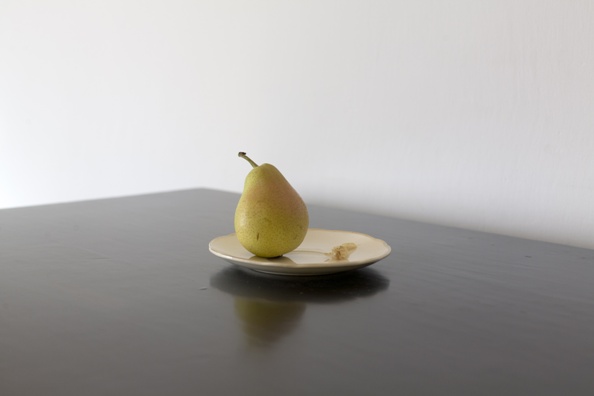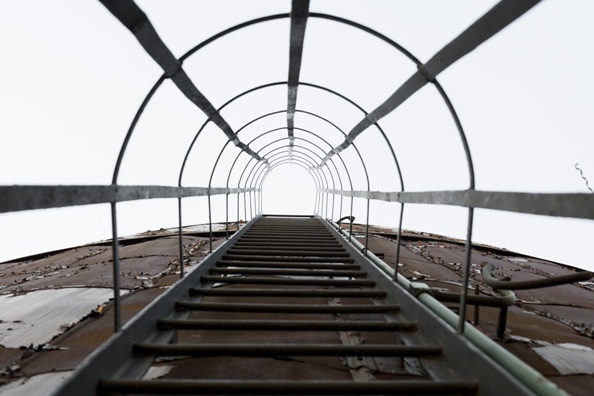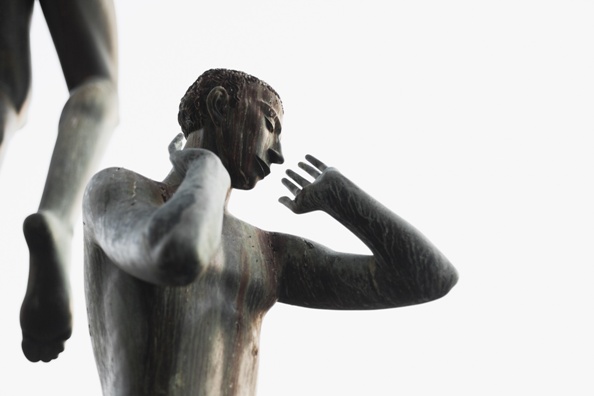
Yossi Breger’s photo exhibition, despite its alluring title that promises a wealth of imagery that would illustrate our daily lives, does not meet up with our expectations. True, he has ‘created’ a widely diverse range of images, large and small: 159 photos of landscapes and buildings, spaces, objects and people, all photographed in recent years in various places around the world. But in the main, the formality of his style fails to rustle up intellectual or emotional enthusiasm in the heart or mind of the viewer.
This is not to say that Breger lacks the skills to photograph in any style he chooses. A senior lecturer of photography in Bezalel’s MFA Fine Arts program, a past exhibitor at the Venice Art Biennale, and recipient of the 1997 Gottesdiener Foundation Art Prize (at a time when he was producing text paintings), his talents are abundantly clear. If confirmation was needed one has only to look at his still life studies on exhibit: a pear on a plate, a bunch of fennel; a heap of potatoes laid on newspaper – photographs that possess all the delicacy and clarity of a Morandi painting:

But the main thrust of Breger’s work is elsewhere. In conversation with photo-historian Nili Goren, he describes his photographic work as exploring identity in its most basic sense. “Man stands either in an architectural structure or Nature and examines what he feels”, he says. But these feelings are not transmitted to the viewer. Instead, one is struck by Breger’s detached approach. It is the geometry and the basic construction of things that interest him, whether his subject is an escalator in the Stockholm metro, or a ladder photographed in Beijing where a horizontal format gives this object the appearance of aircraft propeller.
To some extent, Breger has categorized his subject-matter. But precise documentation of a single type of object in different locations, as exemplified by the work of German photographers Bernd and Hilla Becha, is not really one of his aims. Rather he seeks variety in a range of subject-matter that includes photos of the covers of rare editions of books (such as a Chinese translation of Audrey Hepburn’s biography), oblique views of skylights, close-ups of wall textures.

Roaming Europe, Breger’s camera hones in on well known European sculptures and paintings, but rarely focuses on these artifacts in a complete or recognizable form. For instance, In Stockholm, his photo rendering of Carl Milles’ Orpheus Fountain, consists only of a few details from the upper part of this famous sculpture making it virtually impossible to identify with certainty. Visiting the Palace of Versailles where a copy of Jacques-Louis David’s great painting of Napoleon’s Coronation ceremony is on display, he focused only on the figure of Napoleon, excluding all the pomp and circumstance depicted in this scene.
Of course, Breger has the perfect right to ignore the history or symbolism attached to the subjects he photographs, and to isolate details from their surroundings. But the viewer is left with many questions concerning this basic approach. For instance, one wonders why he chose as one of his photo souvenirs of Cuba, an interior scene showing a woman (the caption calls her ‘the secretary’) entering a room off a hall in the Arts Department of Havana University. Or why he commemorated his visit to the Forbidden City by aiming his lens at the crenellations atop a red wall. The rationale behind these and many other images in this exhibition is obscure. Unless, like the painter of the Arnolfini Wedding Portrait where it is inscribed Johannes de Eyck fuit hic, this is Breger’s way of saying “I was here.”
Meyerhoff Pavilion
Tel Aviv Museum of Art.





